October 2010
Supermarine Seafire Mk.47, Centaur Mk IV Tank
![]()
|
October 2010 Supermarine Seafire Mk.47, Centaur Mk IV Tank
|
Links
to related pages on this Website: ![]()
![]()
![]()
![]()
|
The Times
- October 12th 1940
According
to the German wireless in Brussels, soldiers of the British
Expeditionary Force who have evaded capture are still in Belgium and
northern France, where, with the complicity of the population, who
supply them with civilian clothing and help them in every way, they
succeed in escaping the notice of the German police. |
12 October. With the Battle of Britain clearly lost, Adolf Hitler indefinitely postpones the planned invasion of Britain, Operation Sealion. Instead of invasion, the Blitz begins, with concentrated daylight and nightime bombing of British towns and cities by the Luftwaffe. 18-19 October - U Boat Wolf Packs wreak havoc in the Western Approaches, with west-bound Convoy SC7 (20 of 35 ships sunk) and east-bound HX79 (12 of 49 ships sunk). Altogether, the 18th and 19 October 1940 constitute the worst days shipping losses of the war. After the war, Churchill will admit that the U-Boat campaign was the subject that gave him the most fear; the RAF may have stopped Hitler's invasion, but the Kreigsmarine could still starve Britain into defeat. 23 Oct - Hitler meets with Spanish dictator General Franco, in an attempt to persuade Spain to join the war and allow German troops passage to attack Gibraltar. Franco is sympathetic in principle, but with Spain still exhausted and tense folllowing its Civil War, and mindful of the damage that a Royal Navy blockade will do, he declines to join Hitler's Axis, demanding instead that Hitler arm Spanish forces for an assault on Gibraltar. Afterwards Hitler remarks that he would rather visit the dentist to have his teeth removed than have another meeting with Franco. 28 Oct - Italian troops, based in occupied Albania, invade Greece. The Hellenic Army responds ferociously and successfully drives the Italians back into Albania. The Balkans campaign begins.
|
Link to more WW2 Royal Navy Aircraft on my RN Props pages
Supermarine Seafire Mk. 47 - 800 Squadron, Fleet Air Arm, HMS TRIUMPH
Pusan/Inchon, Korean War - September 1950
Ventura Models 1/72 - out the box
As well as being the 70th anniversary of the Battle of Britain, 2010 also sees the 60th Anniversary of the start of the Korean War. In response to North Korea's invasion of the South, UN Forces, including the British Commonwealth 27th Brigade, became embroiled in a bitter and extended war on the Korean Peninsula.
In early September 1950, the first land elements of this Commonwealth force arrived to reinforce the hard pressed South Korean and US Armies.
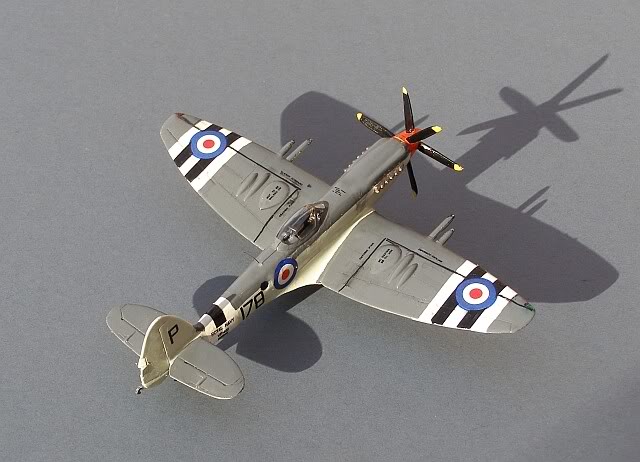
Royal Navy and Commonwealth forces had already been operating around Korea since the end of June, with Seafire (800 Sqn) and Firefly (827 Sqn) aircraft from HMS TRIUMPH participating in the first UN Carrier Strikes (along with aircraft from the USS VALLEY FORGE) on 3 July 1950. After several months of busy action in support of the beleagured UN Forces trapped within the Pusan perimeter, TRIUMPH's Seafires and Fireflies then participated in Operation Chromite, the successful Inchon Landings, on 13 Sep 1950.
At the end of the first day's action at Inchon, General MacArthur, commanding UN Forces, signalled to the Royal Navy's Admiral Andrewes, Commander Task Force 91, "My heartiest felicitations on the splendid conduct of the Fleet units under your command. They have added another glamorous page to the long and brilliant histories of the Navies of the British Commonwealth."
The Seafire 47 was the very last of the Spitfire line, encompassing the Griffon engine, contrarotating propeller, revised wing, larger tail and cut back fuselage top. Although the shape had changed considerably, the link with RJ Mitchell's timely and inspired original Spitfire design remained clear. In this final form, it was also the last of the Spitfire family to go to war, with HMS TRIUMPH's Seafire Squadron playing a key part in the first year of the Korean War, especially the Inchon Landings of September 1950.
However, Korea was to become a key turning point in the history of aviation, as the battle hardened, propeller driven Seafires, Fireflies, Furies, Corsairs, Yaks, Lavochkins, Mustangs and Bearcats, finally gave way to the new generation of jet-powered MiG-15s, Banshees, Panthers and Sabres.
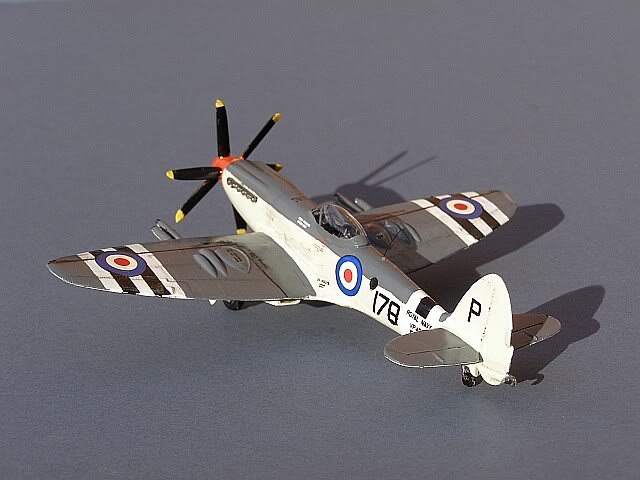
The southern hemisphere's cottage modelling industry produces some remarkable products, and this Seafire 47, from New Zealand company Ventura, is an excellent example. This kit has recently become available again, from a New Zealand company: http://www.jaysmodelkits.com/jaysmk/
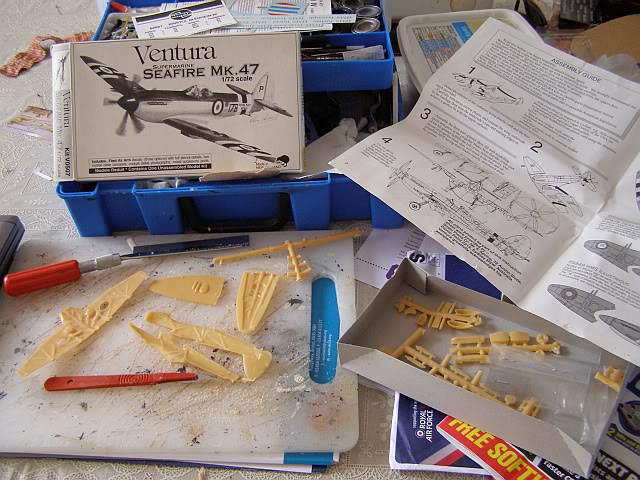
It is very much a short run kit, with strange brittle orange plastic, very thick sprues and strange flow channels in the fairly thin plastic. This latter feature, which you can see in the photograph, does make it difficult to fit some parts (e.g. the wings) together, requiring some heavy duty sanding to remove the channels. However, once you clean the parts up, the basic fit is actually quite good. There are some strange choices - for example, the engine cowling comes as two separate pieces which I defy anyone to do without filler. Many of the smaller parts also suffer from the presence of the large sprue attachments, making careful removal of the parts a major part of the build preparation.
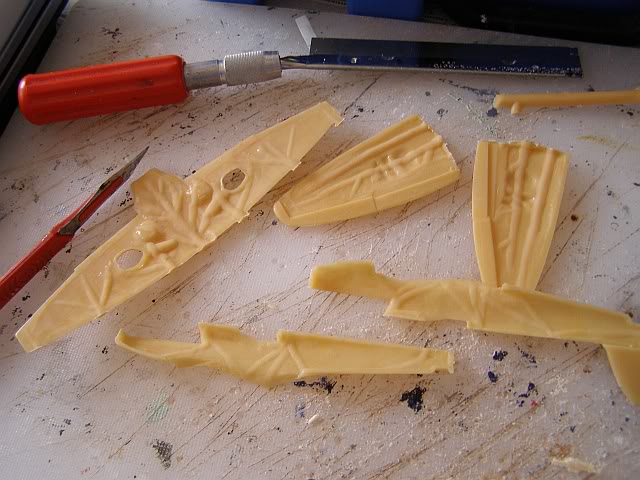
The kit's own cockpit is very bare, albeit with a reasonable instrument panel (with rudder pedals moulded in) and a seat. The instructions show a rear bulkhead and then suggest you use a template (which is missing) to create it from plastic card. Instead, I have inserted a full replacement cockpit from the spares box, originally belonging, I think, to a Revell Mustang.
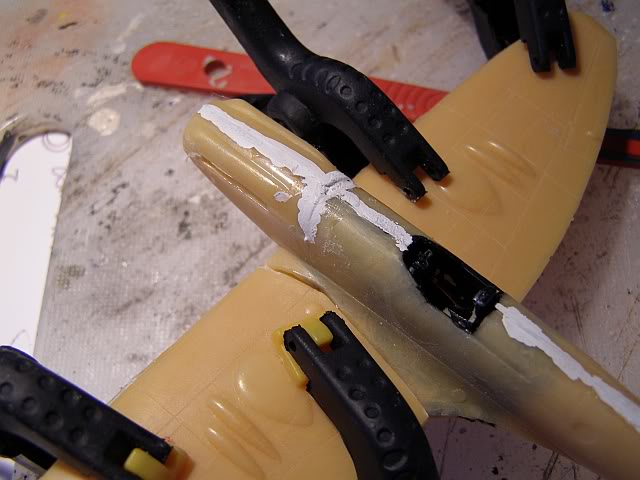
The wing fit is particularly bad, and required a lot of filler. Removing the propeller blades from the sprue was interesting, but they cleaned up well, and there are two spares provided in any case. The rest of the kit went together with little real difficulty, including the vac-formed canopy (again with a spare provided). Underwing fuel tanks are provided, but I opted to fit some rocket launchers from the spares box, since ground attack was the main role of the RN's Korean Seafires. All four cannons are also the same length, so two need to be trimmed, but the instructions include a good set of plans to measure this against
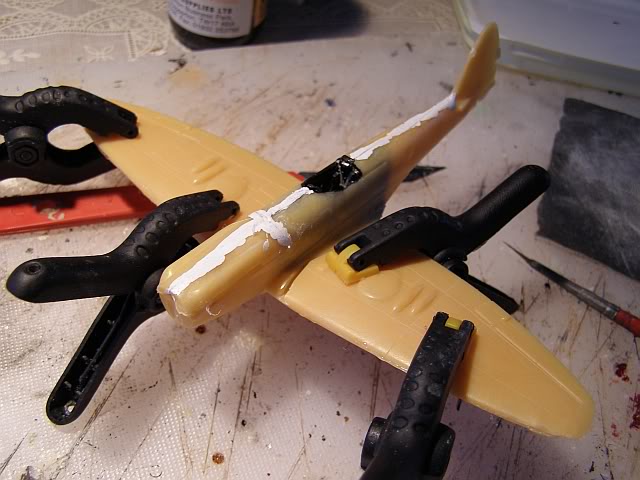
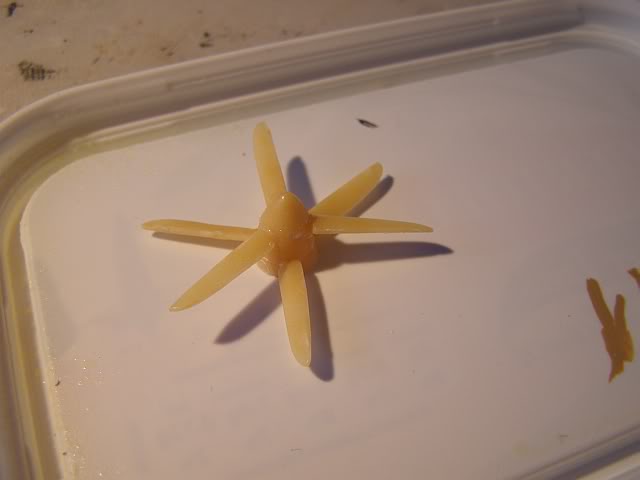
The decals look good, with three options, the Korean aircraft I have chosen, plus an RNVR aircraft and an early trials aircraft with a low EDSG demarcation line. They are nicely printed, although the roundel white was very translucent, leading to problems with the wing stripes showing through, so some Xtradecal replacements were added on top. The black and white stripes are provided as black decals only, which is an approach I like, however the decals were only sufficient for the top of the wings, and in truth, my pen line and paint underwings ones look just as good.
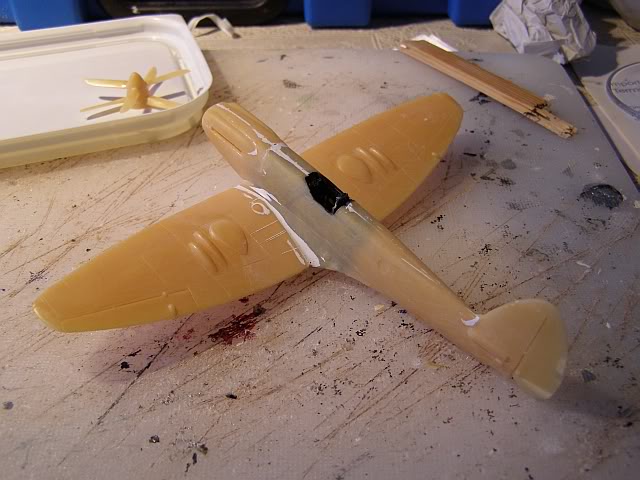
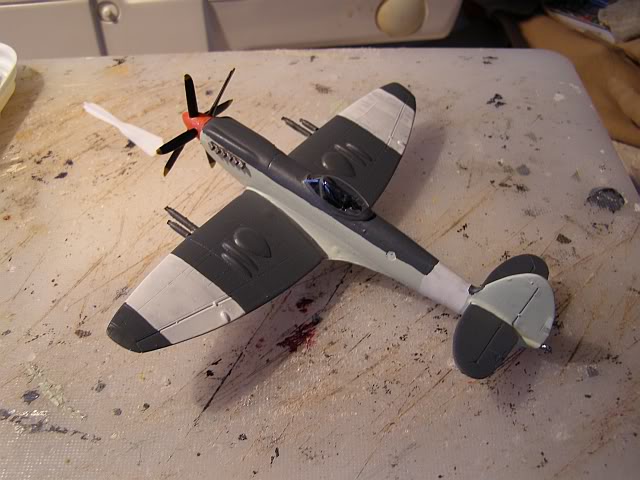
The finished kit looks good, although I am not convinced the engine cowling bends down enough. Still , it's a late Seafire, out the box, and for the most part, this kit is recommended, with the only reservation that it is definitely not one for the beginner.
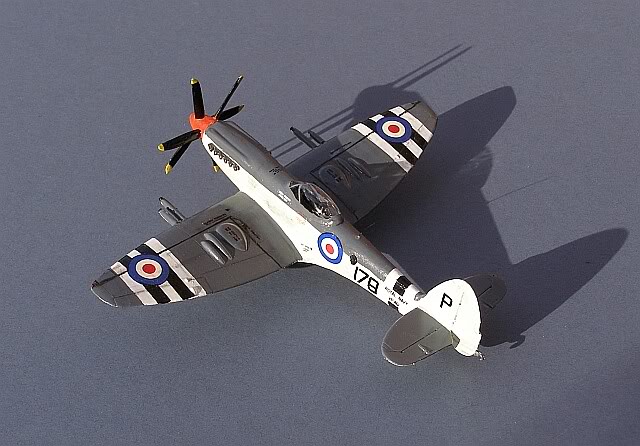
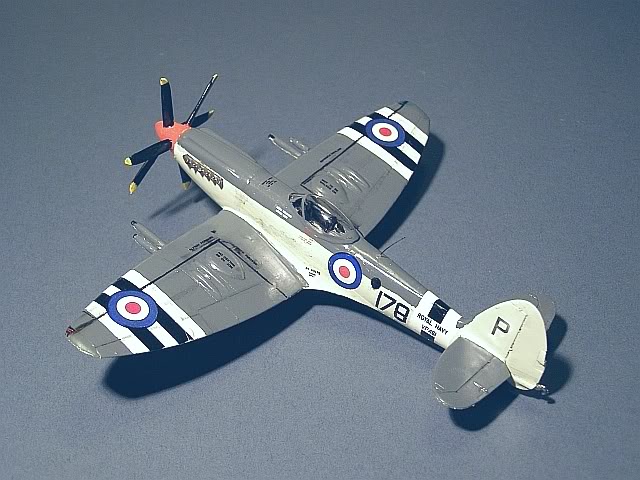
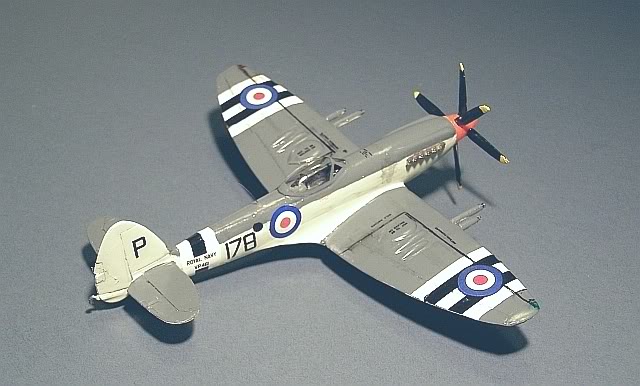
Link to more Seafires on my Seafires Pages
A27 Centaur Mk IV Tank, Royal Marines Armoured Support Group
Normandy Landings - June 1944
Armourfast 1/72 with Bison Decals
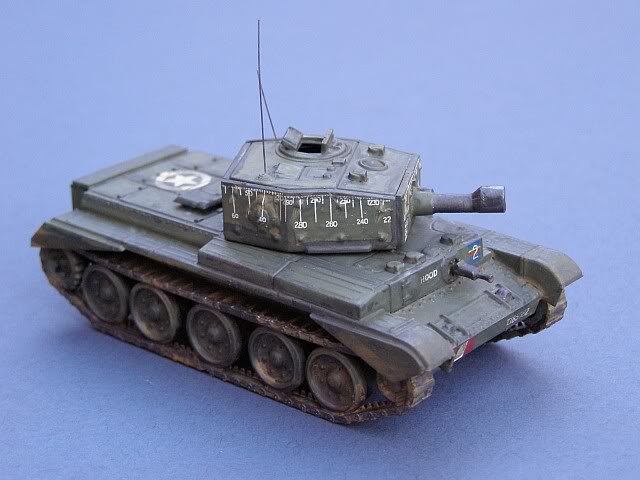
The Royal Marines are not normally associated with tanks. However in the run up to the Normandy Landings, several units of Royal Marines with Naval Gunnery experience (RMs traditionally man the X-Turret of any warship) were equipped with 80 Centaur IV tanks, fitted with 95mm Howitzers. Originally it was intended that this Group's (engine-less) tanks would remain in the LCT(A) landing craft after beaching and provide fire support along the beachhead, but the potential advantage offerred by moving the tanks ashore was recognised and the engines were refitted to allow the Royal Marine's tanks operated up to ten miles inland. The tanks were driven by Army drivers from the Royal Armoured Corps, but the guns were manned by the Royal Marines. Distinctive markings were applied to the turret sides to assist in gun-laying, allowing the RM units to provide co-ordinated barrage fire against the same target.
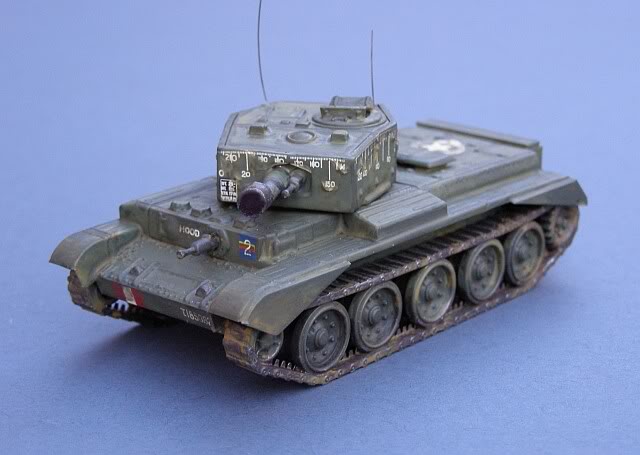
The A27 Cromwell/Centaur tank was one of the most successful British designs of WW2. Developed from the Crusader and building on the experience of the Desert Campaign, it possessed heavier armour and armament, along with high speed and mobility. Its low profile and high speed made it particularly popular as a reconnaissance tank, although its vertical sided armour proved less effective than the thinner sloped armour of the Sheman tank. The name Centaur was given to the earliest A27 designs, powered by WW1 era Nuffield Liberty aero-engines. These proved badly underpowered and the only Centaurs to see action as gun tanks were 95 mm howitzer armed variants operated by the Royal Marines Armoured Support Group. The later Cromwell variant used the much more powerful Rolls Royce Meteor engine, itself a version of the famous Merlin aero-engine, and saw service as late as the 1950s, including action in the Korean War.
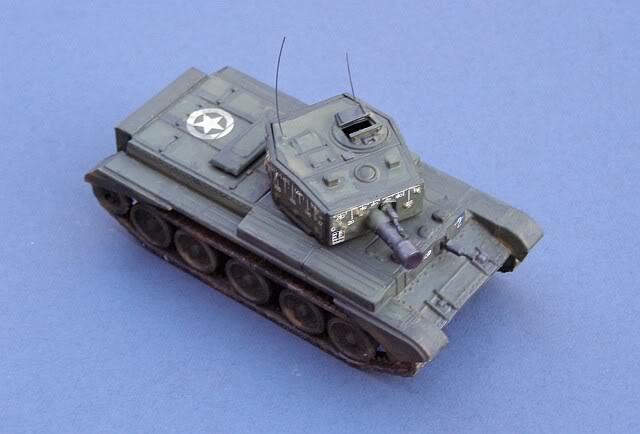
Despite the Royal Marines and Korean War links to my modelling themes, this build was a bit of a one off. I was actually looking for Sherman kits for a future theme when my eye was caught by an Armourfast Cromwell box. I knew that Bison did some RM markings and I needed some other Bison decals for the other project (to be revealed in due course).
Armourfast are a small British manufacturer, distributed by HaT Industries, who produce comparatively straightforward low-cost wargaming kits. However, although they have few parts, the standard of their models is surprisingly high, especially since you get two in each box.
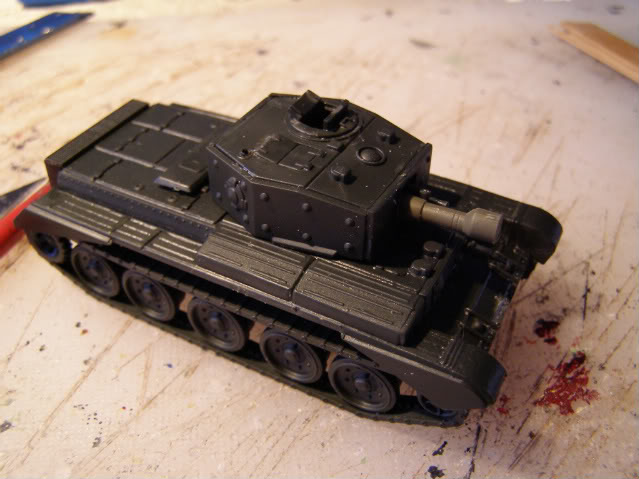
Conversion to a Centaur IV was very straightforward, simply by fitting a different gun barrel, although I should also have removed the forward machine gun. The decals are very nicely printed and really quite reasonably priced; another Centaur with the wading landing snorkel will appear in due course!
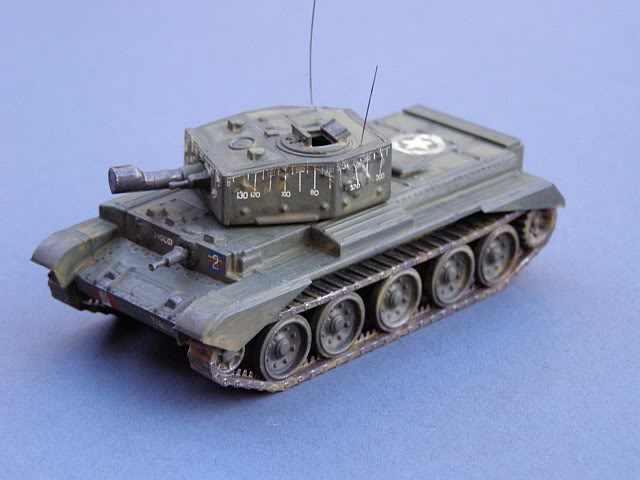
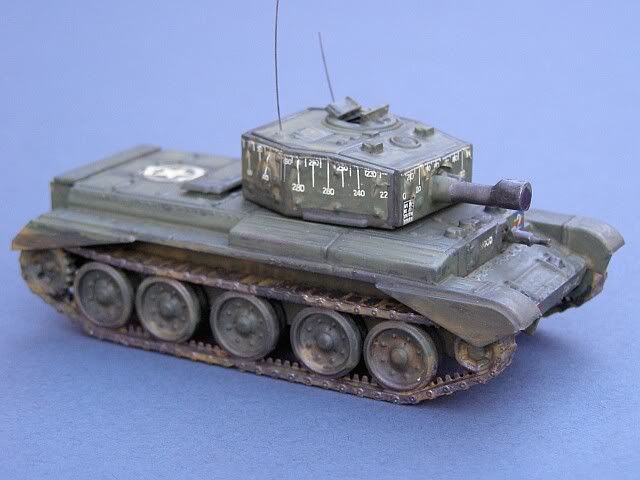
Links
to related pages on this Website: ![]()
![]()
![]()
![]()
www.gengriz.co.uk